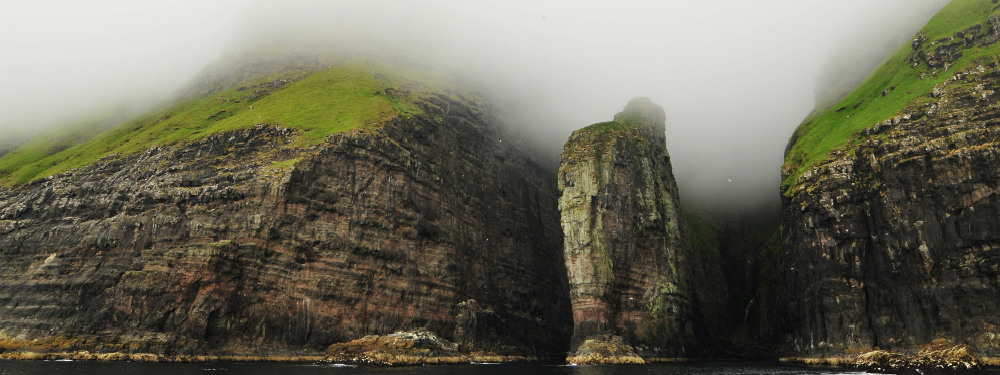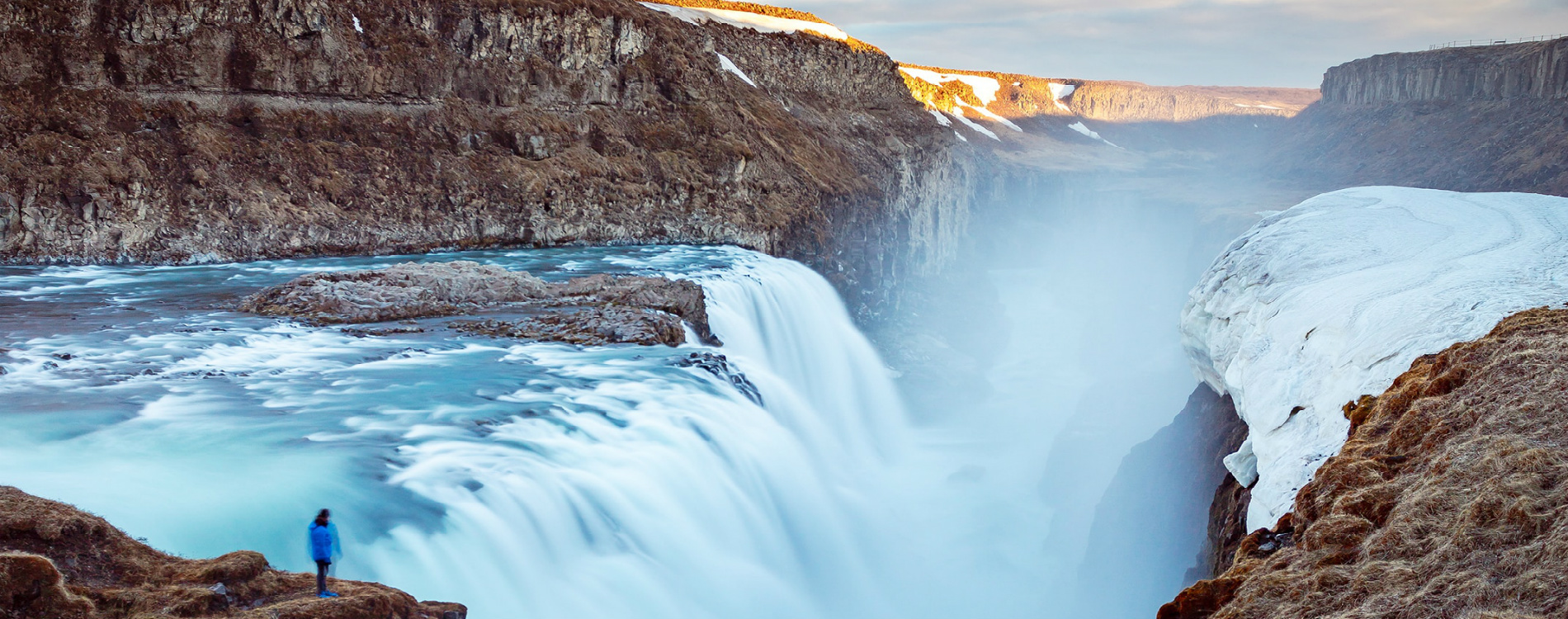A Picturesque Journey of Nordic Beauty
A perfect pairing of natural Nordic beauty! Explore Reykjavik and the geysers, hot springs, volcanoes and fjords of Iceland before adventuring into the rustic charms and raw landscapes of the Faroe Islands. Between these two jewels, there are only slightly more than 400,000 people, but no shortage of incredible experiences.
We recommend beginning this trip in Reykjavik and staying in one of the city’s best hotels. Take part in a private culinary tour, a guided city walking tour or choose to take a private tour at one of Reykjavik’s many museums. Reykjavik is a beautiful city with colorful architecture, natural beauty — the mountains Akrafjall and Esja hover over the bay near the harbor city — and a number of gastropubs, restaurants and quirky cafés linger in and around, creating a surprisingly vibrant atmosphere.
The Blue Lagoon, a man-made geothermal lagoon, remains one of the country’s most visited attractions. Located in a lava field near the picturesque Grindavik mountain, the water has average temperatures of almost 40 °C (over 100 °F) and a milky blue shade due to its high mineral content – which locals ascribe to the lagoon’s healing powers.

Spend time exploring the Golden Circle, a loop south of Reykjavik. Take in the Gullfoss Waterfall, the iconic waterfall fed by Langjökull Glacier, as it crisscrosses the Hvítá River and gushes down a series of rock facades toward the base of a narrow canyon. The Geysir Hot Spring Area contains many different spouts — Geysir (the verb ‘geysa’ is an Icelandic word that means ‘to gush’), Strokkur (‘the churn’) and good number of others. Explore the area and witness Strokkur’s famous bubble rise just before it erupts!
Just outside the city, Thingvellir National Park was once the site of the world’s oldest Parliament, known as Iceland’s Alþingi or Althing, until it moved to Reykjavik in 1881. The park itself is a stunning visual reminder of what makes Iceland’s landscape so unique, as two tectonic plates — the North American and the Eurasian — collide on land in the park, a phenomenon that occurs almost nowhere else on Earth (and it offers up fascinating diving opportunities).
Traveling to Akureyri, the second largest city, is an option — dining in the areas premier restaurants and staying at the Hotel Kea, the nicest hotel in the city which features a view of the Eyjafjörður, Iceland’s longest fjord. Visit the Mývatn Nature Baths and take a relaxing dip in the soothing mineral rich, geothermally heated pools and steam baths.
From Iceland, it’s a short flight to the Faroe Islands. A fantastic archipelago (799 islands) positioned between Iceland, Norway and Scotland, it is often referred to as Europe’s hidden gem.

The diverse Faroe Islands have an otherworldly beauty, encapsulating stunning nature and deep rooted Nordic culture. The Faroes Islands are self-ruling but actually remain a part of the Kingdom of Denmark. When the first Vikings settled here in the early 9th century, they established their main parliament base on the peninsula of Tinganes. Its oldest houses — still in use today — can be dated from the early 14th century. Tórshavn, with a population of 19,000, has since taken over as the largest city and capital of the Faroes.
Food in the Faroes surprises people (it surprised us). Two-star Michelin-rated KOKS Restaurant, north of the capital of Tórshavn, commands a spectacular view of the middle of Streymoy Island. The New Yorker called it ‘the world’s most remote foodie destination.’ A 17-course menu of local faire, fresh caught or foraged from the nearby fjord, offers an astounding array of tastes and textures for the discerning palate (KOKS employs nine chefs, each from a different country). Yet there are a healthy number of other very good restaurants in Tórshavn and beyond which will keep you quite well fed for however long you choose to stay.
Many of the Faroe Islands can be reached by automobile (the Faroes has a sophisticated road and bridge system), ferry and helicopter. The mild winter and cool summer temperatures allow for ample opportunities for you to walk and hike the many destinations.
The island of Mykines offers one of the many great walking landscapes that make up the Faroes. It is the Faroes most westerly outpost and can be reached by ferry, which passes by some of the archipelago’s most majestic sea cliffs. Once upon the island, the solitary village and its turf roofed houses become visible as do the charming puffins with their colorful red beaks and the striking gannets (large white birds with yellowish heads, long bills and black-tipped wings that can span up to two meters). Cross the footbridge to reach the islet where the birds breed and a lighthouse stands watch, and look out upon the blue Atlantic Ocean as far as you can see.
These are amazing islands to visit, and it’s easy traveling. We love taking travelers on this special trip.

